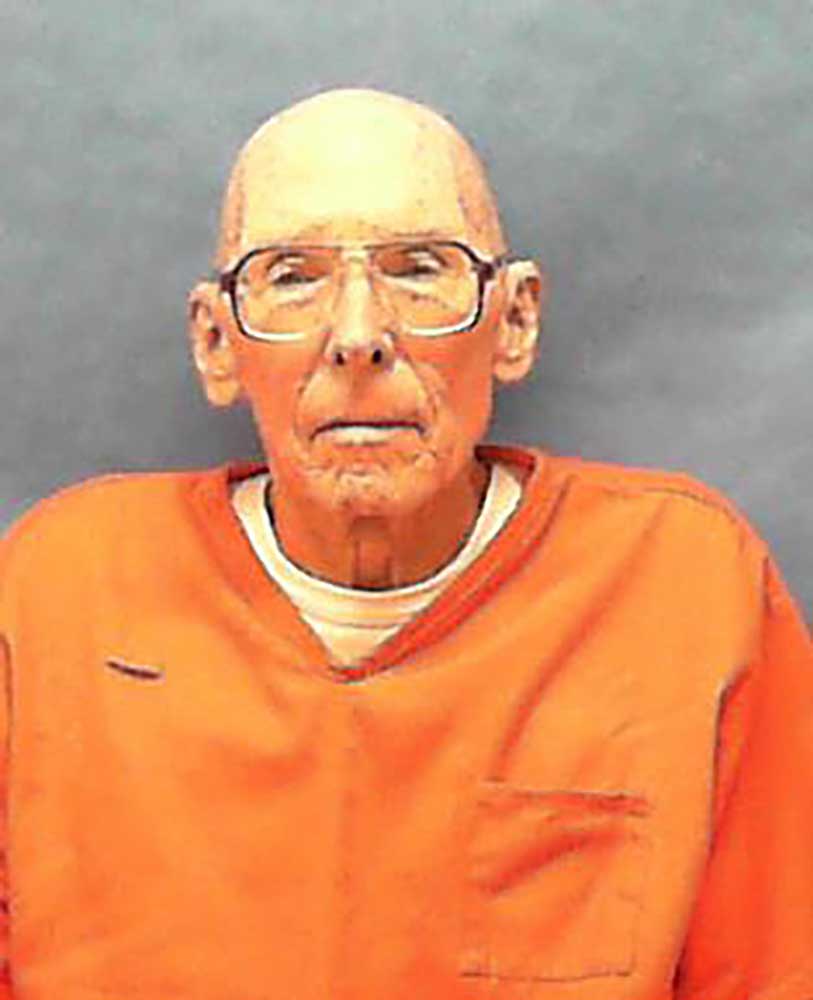On Florida’s death row, inmates often outlive the judges who condemn them
Published 9:05 am Sunday, March 10, 2024

- Florida's longest-serving death row inmate is William Zeigler, who was sentenced in Duval County in July 1976. Judge Maurice Paul died in 2016 at age 84. Ziegler is now 78. (Florida Department of Corrections/TNS)
FORT LAUDERDALE, Fla. — The state of Florida executed six inmates last year, including one from Palm Beach County. Four of them, including the one from Palm Beach County, lived longer than the judges who condemned them.
Trending
Duane Owen was 25 when he was sentenced to death in 1986 by Palm Beach Judge Richard Burk. He was convicted of killing a 14-year-old babysitter and a 38-year-old mother of two in separate attacks months apart in 1984 while children were sleeping in the homes he targeted. He was 62 when he was executed last June. By then, Burk had been dead four years. Burk was 87 when he passed away.
Delays, continued investigations, appeals, changes in state leadership and upheavals in the law combine to form a reality that, to some, undermines the death penalty’s potential effect as both a punishment and a deterrent to violent crime — many inmates who are condemned to Florida’s death row outlive the judges who send them there.
Those judges are often veterans on the bench who establish their qualifications to rule on such cases, said Maria DeLiberato, a former prosecutor turned defense lawyer who serves as executive director of Floridians for Alternatives to the Death Penalty.
Trending
“What you sometimes get is people saying we should cut out the appeals process,” she said. “But you can’t cut the appeals process because Florida often gets it wrong. The appeals process takes a long time because it has to!”
According to the nonprofit Death Penalty Information Center in Washington D.C., Florida has had 30 exonerations from death row, while Florida inmates sentenced to death are eight times more likely to have their sentences overturned than be executed.
According to the Florida Department of Corrections, the average age of an inmate at the time of sentencing is 27.4 years. The average age at execution is 44.9 years. But those figures incorporate trials and executions that took place over a period of nearly 50 years since the death penalty was reinstated in Florida.
Today it would almost be an issue of swift justice if an inmate were to be executed within 18 years of sentencing. Most of the 280 inmates currently on death row have been there since the 1980s and 1990s. Some are already older than the oldest inmate ever executed in Florida (Charlie Grifford, 72, executed in 1951).
The state’s longest-serving death row inmate is William Zeigler, who was convicted of murder and sentenced in Duval County in July 1976. The judge who sentenced him, Maurice M. Paul, overrode the jury’s recommendation of a life sentence and condemned Zeigler to death. Now 78, Zeigler has maintained his innocence in the murders of his wife, her parents and a customer at the furniture store he owned in Winter Garden.
As for the judge who sentenced him, he went on to serve on the federal bench. Maurice Paul died in 2016 at age 84.
James Rose, 78, South Florida’s longest-serving death row inmate, was sentenced in 1977 by Broward Circuit Judge M. Daniel Futch Jr. for the November 1976 kidnapping and murder of Lisa Berry, an 8-year-old girl from Hollywood.
The Florida Supreme Court once overturned the sentence because Futch ordered the jurors to continue deliberating after they deadlocked 6-6 in the trial’s penalty phase. The high court ruled that Futch should have accepted the vote as a recommendation for a life sentence. A new sentencing phase was ordered, and the new jury’s recommendation for death was 11-1.
Rose pleaded guilty in 2018 to the otherwise unrelated rape and murder of Jean Savage in Delray Beach in April 1975. In exchange for his plea, he was sentenced to life in prison.
His sentencing judge, Futch, died in 2009 at age 75.
Paul Scott, sentenced in 1979 by Palm Beach Judge Vaughn Rudnick, was convicted alongside codefendant Richard Kondian for the 1978 murder of James Alessi. Kondian, who pleaded guilty to second-degree murder, was sentenced to 45 years in prison and was released on parole after 14 years. Scott, 67, has maintained his innocence.
Rudnick died in 1993 at age 61.
From Miami-Dade County, the longest-serving inmate is William Thompson, 72. Thompson and co-defendant Rocco Surace were convicted and sentenced to death for the March 1976 kidnapping, rape and murder of Sally Ivester. Both had their sentences overturned. At Surace’s second trial, according to court records, Thompson testified and took responsibility for the crime. Surace was convicted of second-degree murder and sentenced to life in prison. Thompson was sentenced by Miami-Dade Judge John Tanksley, who died in 2002 at age 76.
Other long-serving death row inmates fit the same pattern.
—Harry Phillips, 78, was sentenced in 1984 by Miami Judge Arthur I. Snyder, who died in 2004 at age 81.
—Omar Blanco, 73, was sentenced in 1982 by Broward Judge Stanton Kaplan, who died in 2012 at age 76.
—Michael Rivera, 61, was sentenced in 1987 by Broward Judge John Ferris, who died in 2001 at age 79.
—Dennis Sochor, 72, was sentenced in 1987 by Broward Judge Russell Seay, who died in 2011 at age 85.
The last inmate from Broward County to be executed was Robert Lavern Henry in March 2014. The judge who sentenced him to death in 1988, Mark Polen, actually outlived him. Polen died in 2016 at age 71.
“Whether you’re philosophically against the death penalty or you believe it’s a righteous application of the law, the fact remains that in practice, it’s proven to be a waste of time,” said former Broward Circuit Judge Paul Backman, 75, who sentenced nearly a dozen convicted killers to death during his tenure. Some had their sentences overturned. Some died of suicide or natural causes. A few still await execution.
Backman doesn’t expect to be alive to see them.
“I’ll be long gone from earth before that happens,” he said.
———–








